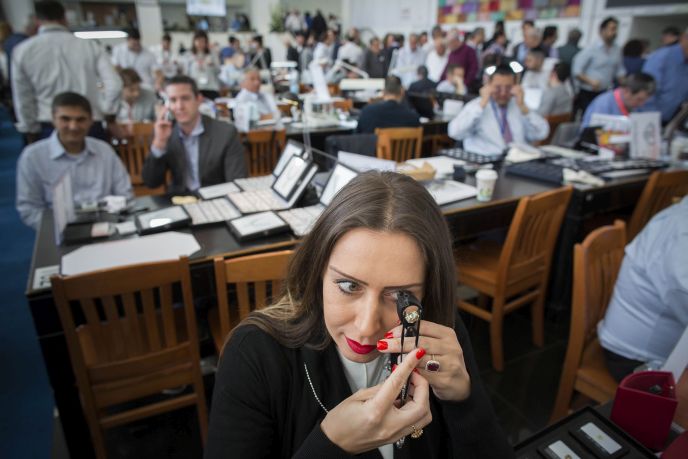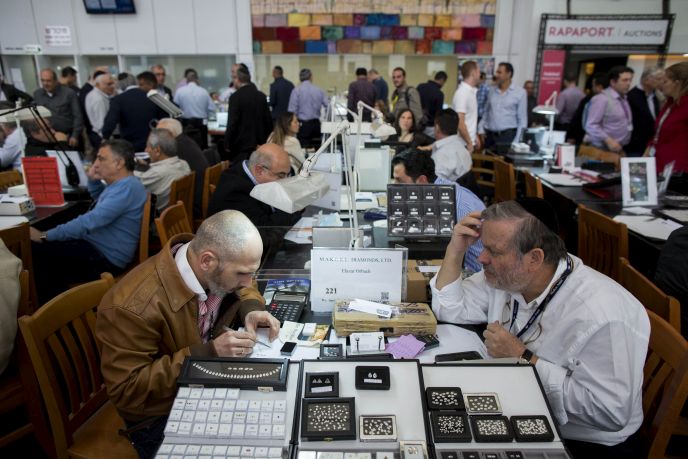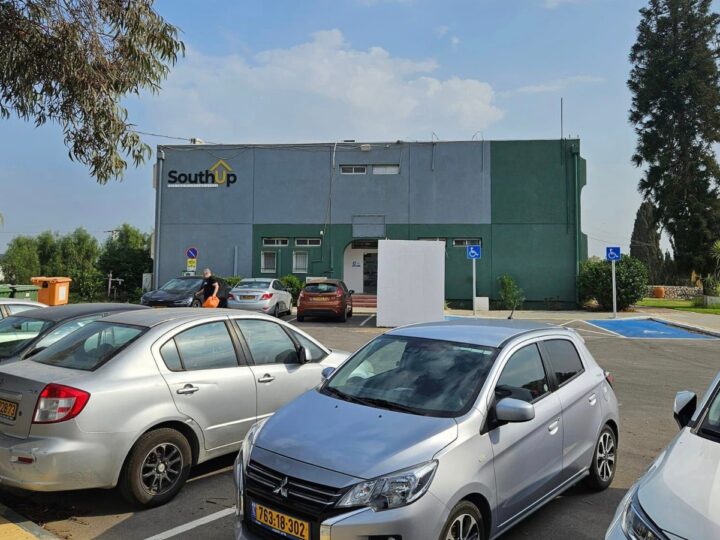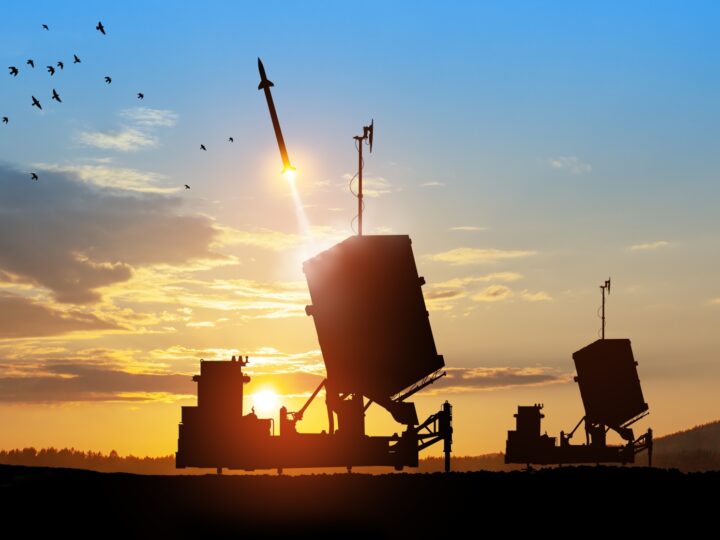
Hundreds of buyers from around the world jammed the trading floor at the Israel Diamond Exchange to find the best gems during International Diamond Week in February. They were also introduced to the latest technological advances in the diamond industry.
“For years, the diamond industry was seen as archaic, working with dated technologies to treat the diamonds,” IDE President Shmuel Schnitzer told exhibitors. “But these times are long gone. The polishing process, as well as the manufacturing process and trade, are done using cutting-edge technologies that are constantly improving.”
Israel’s export of polished and rough diamonds totaled some $9.324 billion last year, up from $9.166 billion in 2013. Diamonds constitute 20 percent of Israel’s total industrial export.
Israel is not only a top diamond exporter but is also considered the most advanced in diamond polishing. Israeli technology is used in the international diamond industry’s cutting, bruting and automatic polishing machines, as well as computer-aided design systems, according to the Israeli Diamond Industry.
“The name of the game is to keep the qualitative edge. And we’re always one step ahead,” Israel Diamond Exchange Managing Director Moti Besser tells ISRAEL21c.
The International Diamond Week event attracted 400 buyers from 24 countries, including large delegations from the US, Belgium and Turkey. There were representatives from India, UK, China, Hong Kong, Taiwan, Thailand, Japan, Italy, Austria and South Africa, among others.
Diamantaires set up tables with diamonds of all shapes, colors and sizes. There were little bags of tiny sparkling stones, jewelry with twinkling two-carat stones, gleaming 10-carat rocks, and rough diamonds holding the potential of secret beauty.
“We are cutting diamonds in a most precise way,” Majestic Jewelry Managing Director Roni Stschik tells ISRAEL21c about his exclusive necklaces. “We create from smaller stones a look of larger diamonds. For example, a diamond of one carat looks like three and a half carats. A lady can wear something that costs $5,000 that looks like $50,000 to $100,000. It’s high-tech in jewelry.”
Appraising a diamond online
The event’s DiamTech exhibit featured leading Israeli players in imaging and diamond-processing advances needed for today’s sellers and buyers doing business in the online marketplace.
“Every diamond in a piece of jewelry makes its rounds around the world before it is set,” Yaakov Almor, the diamond exchange’s director of public relations, tells ISRAEL21c. “We have been able to reduce the travel around the world because of the technology. We’ve reached the pinnacle of technology insofar as seeing inside the rough without having to touch it.”
The Shirtal DiaCam360 tabletop scanner, which produces 360-degree photos and videos of diamonds, made its world debut at the exhibit. This high-tech tool enables clients in distant locations to view Shirtal diamonds easily from every angle, as if they were holding the stone in their hands.
Besser says Israeli technologies also support the critical process of decision-making.”In the past, in order to estimate what you can manufacture from the rough diamond, there were a few specialists who could estimate. Now there’s this MRI-like machine that can look and see what exactly you can do with the rough diamond [and] what is the value of the polished diamond.”
Besser was talking about Sarine Technologies’ Galaxy Ultra system for the automated detection and mapping of internal features in rough diamonds. The system gives customers conventional and high-resolution, near-microscopic modes,eliminating the need for manual microscopic inspection.
“Without technology, the industry will not be able to compete. Technology enables the diamond industry to prosper,” Sarine CEO Uzi Levami said. “This new generation of consumers wants to know the story behind the diamonds they are buying, and without technology this would be impossible. In recent years, we are witnessing the integration of technology in sales, and I believe that this trend will only grow.”
Segoma Imaging Technologies, recently acquired by online diamond retailer James Allen, specializes in 3D photography solutions for the diamond industry. Its laboratories are located in the Mumbai, New York and Ramat Gan diamond bourses.
“We are proud that Israeli technologies[are] selling all over the world,” Besser says. “Today, you need devices like cameras and special imaging. Israeli technology is leading the way.”
Design-tech and mining deals
New joint projects between the Israel Diamond Exchange and the Holon Institute of Technology (HIT), as well as with mining giant Alrosa, were big news at Israel Diamond Week.
HIT President Prof. Eduard Yakubov announced the launch of a program in gemology and “other projects that will advance the industry” at DiamTech.

“Israel is a known leader in technology, high-tech and investment in high-tech industries. Many inventions originated here – disk-on-key, 3D printers, the Iron Dome and more. I’m certain that the bases for these technologies will soon find their way into the diamond industry,” Yakubov said.
A memorandum of understanding (MoU) with Alrosa, a Russian group of diamond mining companies, calls for developing new methods of sorting and analysis of the origin of diamonds. It also opens the door to joint research on new technologies for diamond cutting and polishing.
Alrosa exports some $550 million worth of rough diamonds to Israel annually, and this number is expected to grow following the MoU.
“The MoU agrees on much more than rough supply, and covers many other needs and benefits – exchange of information and specialists, cooperation in marketing efforts abroad, development of joint projects for corporate responsibility, education and more,” said Schnitzer. “I’m happy and excited to be a part of this historic day for the Israeli diamond industry.”
For more information, click here.
Fighting for Israel's truth
We cover what makes life in Israel so special — it's people. A non-profit organization, ISRAEL21c's team of journalists are committed to telling stories that humanize Israelis and show their positive impact on our world. You can bring these stories to life by making a donation of $6/month.










